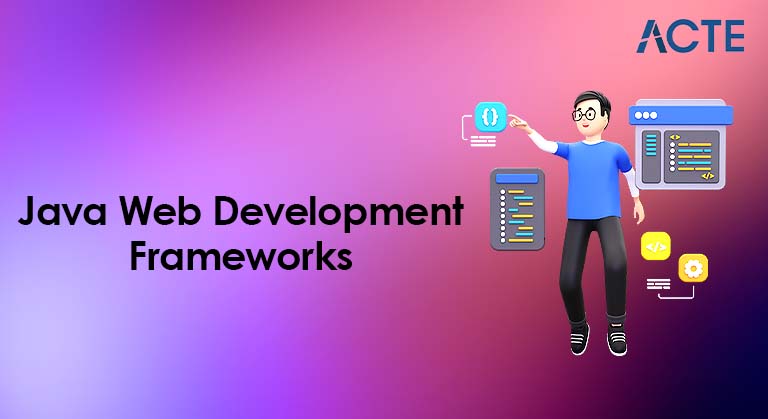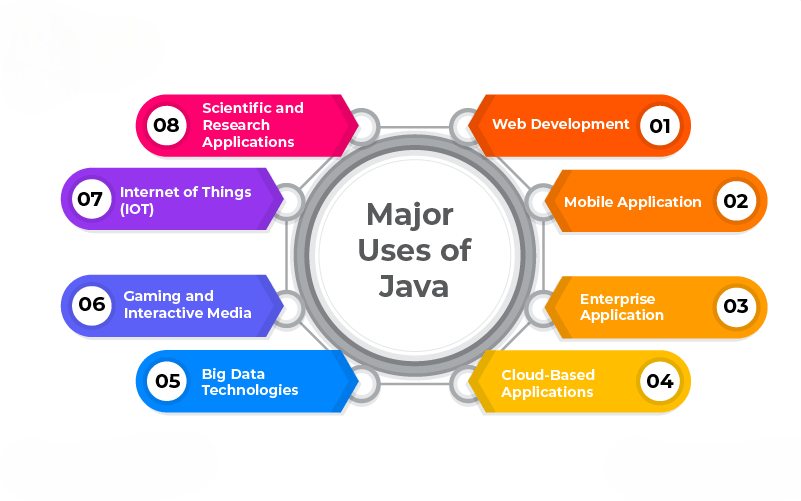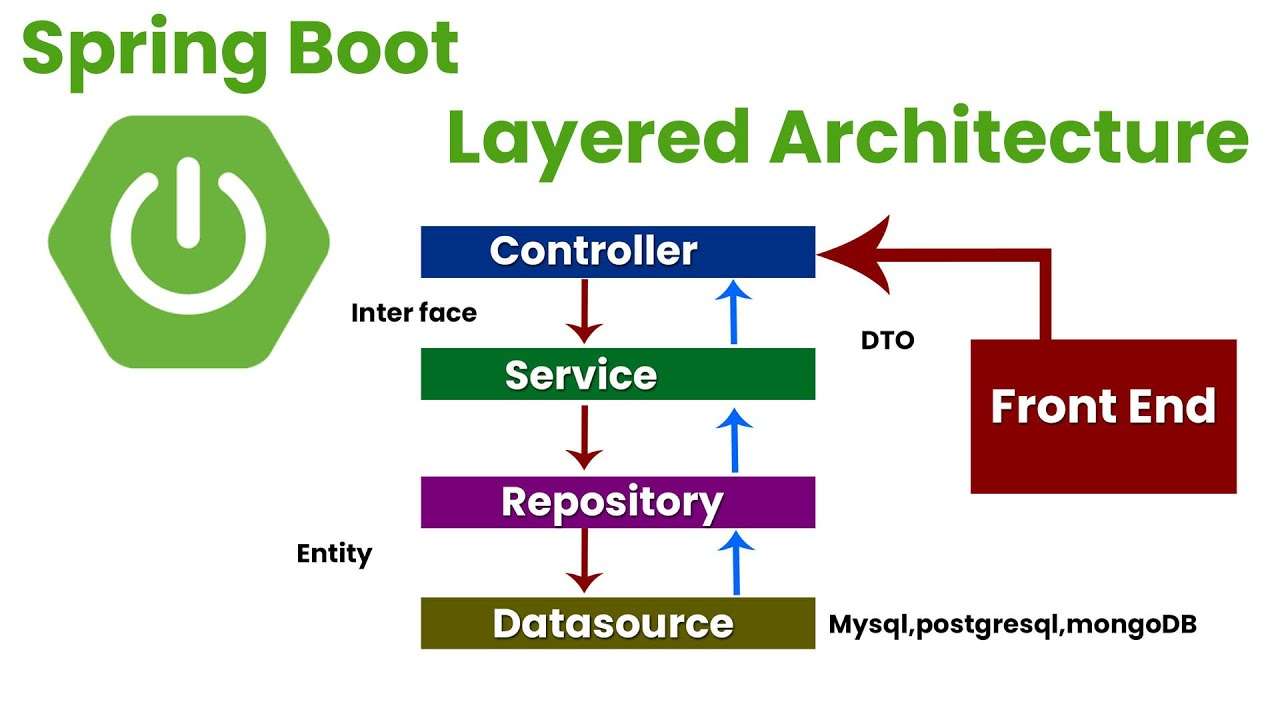
- Introduction to Java Web Development
- Java Servlets
- JSP (JavaServer Pages)
- Spring Framework
- Spring Boot for Web Development
- RESTful APIs with Java
- Hibernate and JPA
- Database Connectivity
Introduction to Java Web Development
Java web development is a powerful and widely used approach for building dynamic, interactive, and scalable web applications. At its core, it utilizes Java technologies such as Servlets, JavaServer Pages (JSP), and frameworks like Spring and Hibernate to create robust web solutions. The platform’s object-oriented nature, combined with its vast ecosystem, makes it a preferred choice for developers building enterprise-level applications. For those looking to enhance their skills, Web Developer Certification Courses can provide the necessary expertise to excel in building scalable and efficient web applications. Java web development typically involves handling HTTP requests and responses, session management, and connecting to databases using JDBC (Java Database Connectivity). One of the significant advantages of Java in web development is its portability, as applications can run seamlessly across different platforms without modification. Moreover, Java’s strong security features, multi-threading capabilities, and support for large-scale, distributed systems make it ideal for building web services, e-commerce platforms, and content management systems. With frameworks like Spring Boot simplifying the development process, Java web development has become even more accessible to developers, offering a more streamlined and efficient workflow. As web technologies continue to evolve, Java remains a reliable and robust choice for developers seeking to build high-performance, scalable, and secure web applications.
Are You Interested in Learning More About Web Developer Certification? Sign Up For Our Web Developer Certification Courses Today!
Java Servlets
- Request Handling: Servlets process client requests by capturing input data from forms or URLs and managing the flow of control between the server and client.
- Server-side Execution:Unlike traditional client-side scripting, Java Servlets run on the server, generating dynamic content like HTML, XML, or JSON responses. For developers looking to enhance their front-end skills, you can Learn React Hooks to manage state and side effects in React applications, improving the interactivity and efficiency of your web interfaces.
- Platform Independence: Servlets benefit from Java’s “Write Once, Run Anywhere” philosophy, making them portable across different operating systems and web servers.
Java Servlets are a foundational technology for building web applications in Java. They are server-side programs that handle client requests, typically HTTP, and generate dynamic content. Servlets form the backbone of many Java web applications, making them crucial for Java backend developers. Here’s a breakdown of key points about Java Servlets:

- Efficiency and Scalability: Servlets are lightweight, efficient, and designed for handling multiple concurrent requests, making them highly scalable for large applications.
- Integration with Databases: Java Servlets can easily connect to databases using JDBC, allowing backend developers to manage data-driven applications seamlessly.
- Part of the Java EE Ecosystem: Java Servlets are an integral part of Java Enterprise Edition (Java EE), commonly used in conjunction with JavaServer Pages (JSP) and Enterprise JavaBeans (EJB) by Java backend developers to create robust, enterprise-grade web applications.
- Separation of Concerns: JSP allows developers to separate the user interface (HTML) from the business logic (Java code), making the code more maintainable and scalable.
- Dynamic Content Generation: JSP pages can dynamically generate content based on user input, database queries, or any other server-side logic, which is crucial for Java Web Development.
- Use of Java Code in HTML: JSP enables embedding Java code directly within HTML using special tags like <% %> for scriptlets, making it easy to add dynamic behavior to web pages. For those diving into React, understanding React Context for beginners can help you manage global state efficiently across your application, simplifying the flow of data between components.
- Integration with Servlets: JSP works seamlessly with Java Servlets. While Servlets handle the request processing, JSP is used to generate the HTML response, allowing developers to focus on different aspects of Java Web Development.
- Reusability with Tag Libraries: JSP supports tag libraries like JSTL (JavaServer Pages Standard Tag Library), which simplifies coding by providing reusable components for common tasks like loops, conditionals, and internationalization.
- Efficient Compilation: JSP pages are compiled into Servlets by the web container, offering the performance benefits of Servlets while maintaining a higher level of abstraction for developers, making them a powerful tool in Java Web Development.
- Auto Configuration: Spring Boot automatically configures various components based on the project’s dependencies, minimizing the need for manual configuration and allowing developers to focus on business logic.
- Embedded Servers: Spring Boot includes embedded web servers like Tomcat, Jetty, and Undertow, enabling developers to run applications without needing an external server, making deployment easier and more efficient.
- Quick Setup: Spring Boot’s “starter” templates provide pre-configured sets of dependencies for common tasks like web development, security, and data access, reducing the time spent setting up a project. For mobile developers, the React Native Maps complete guide offers a comprehensive approach to integrating maps into your mobile apps, enhancing user experience with geolocation features.
- Microservices Architecture: With Spring Boot, developers can easily build microservices-based applications. It integrates well with Spring Cloud, enabling scalable and resilient distributed systems.
- Production-Ready Features: Spring Boot comes with built-in features like health checks, metrics, and monitoring tools, making it easier to manage applications in production environments.
- Simplified Deployment: By packaging applications as executable JAR files or WAR files, Spring Boot simplifies the deployment process, enabling developers to deploy applications with minimal configuration and external dependencies.
Java Servlets are a must-know technology for any Java backend developer, serving as a building block for modern Java web applications.
JSP (JavaServer Pages)
JavaServer Pages (JSP) is a technology that allows developers to create dynamic, data-driven web pages using Java. It is a part of the Java Web Development ecosystem, enabling the separation of presentation and business logic in web applications. JSP combines HTML, Java, and special tags to dynamically generate content, making it an essential tool for Java web developers. Below are the key points about JSP:
JSP plays a vital role in Java Web Development, offering an efficient and effective way to build dynamic, maintainable, and scalable web applications.
Excited to Obtaining Your web developer Certificate? View The web developer course Offered By ACTE Right Now!
Spring Framework
The Spring Framework is a comprehensive, open-source framework that simplifies Java development by providing a wide range of tools and features to build robust, scalable, and maintainable applications. It is one of the most popular frameworks for Java web development, offering a lightweight container that manages application objects and their dependencies through Inversion of Control (IoC). For those looking to advance their career, Web Developer Certification Courses can provide the necessary skills to work with frameworks like this and build robust, scalable web applications. This feature helps in creating loosely coupled components, making the application easier to test and maintain. Spring also supports Aspect-Oriented Programming (AOP), allowing developers to separate cross-cutting concerns like logging, security, and transactions. Additionally, the Spring framework provides a wide array of modules, such as Spring MVC for web applications, Spring Data for data access, Spring Security for authentication and authorization, and Spring Boot for simplifying configuration and deployment.
Spring Boot, in particular, has gained popularity by enabling developers to quickly create stand-alone, production-ready applications with minimal configuration. The Spring Framework also integrates seamlessly with other Java technologies, such as Hibernate and JMS, offering a flexible and extensible platform for developing enterprise-level applications. With its robust features, scalability, and vast ecosystem, the Spring Framework continues to be a go-to choice for developers involved in building modern Java applications, especially in the realm of Java web development.
Interested in Pursuing web developer certification Program? Enroll For Web developer course Today!
Spring Boot for Web Development
Spring Boot is a powerful, feature-rich framework that simplifies Java web development by providing a streamlined approach to building and deploying web applications. It eliminates much of the boilerplate code required in traditional Spring-based applications, making it easier and faster for developers to create stand-alone, production-grade applications. Below are key points about Spring Boot for Web Development:
In Spring Boot for Web Development, these features enable faster, more efficient development of scalable, secure, and maintainable web applications.

RESTful APIs with Java
RESTful APIs with Java are a fundamental part of modern web development, allowing applications to communicate and exchange data over the internet using HTTP. Java provides powerful frameworks like Spring Boot, JAX-RS (Java API for RESTful Web Services), and Jersey to create efficient, scalable, and maintainable RESTful APIs. REST (Representational State Transfer) is an architectural style that leverages standard HTTP methods (GET, POST, PUT, DELETE) to interact with resources, which are typically represented as URLs. Using Java for building RESTful APIs allows developers to create highly flexible and platform-independent services. With frameworks like Spring Boot, developers can rapidly build APIs with minimal configuration, offering features like dependency injection, auto-configuration, and security. Java also supports JSON and XML for data exchange, ensuring smooth interoperability across different platforms and languages. Similarly, in front-end development, understanding State in React JS explained is essential for managing dynamic data and ensuring seamless updates in your React applications. The use of RESTful APIs is especially crucial in microservices architecture, where services are decoupled and communicate over HTTP. Java’s robust security features, such as OAuth and JWT (JSON Web Tokens), make it ideal for developing secure APIs. Furthermore, tools like Swagger allow developers to document and test APIs easily. RESTful APIs with Java are key for creating efficient, scalable, and secure web services that power modern applications, from mobile apps to enterprise-level systems.
Hibernate and JPA
Hibernate and Java Persistence API (JPA) are essential tools for managing database operations in Java applications, providing an object-relational mapping (ORM) solution that simplifies data interaction. Hibernate is a powerful ORM framework that enables Java developers to map Java objects to database tables, automatically handling tasks such as data retrieval, updates, and persistence. JPA, a specification in Java, defines a standard way to manage relational data in Java applications, and Hibernate is one of the most widely used implementations of this specification. Similarly, for handling binary data, Buffer in Node.js explained provides a way to efficiently manage raw memory, making it easier to work with streams and binary files in Node.js applications. Together, Hibernate and JPA offer a seamless way to interact with databases without the need for complex SQL queries, reducing boilerplate code and improving productivity. When combined with Spring Boot for Web Development, Hibernate and JPA provide a robust solution for building data-driven applications. Spring Boot integrates smoothly with Hibernate, offering auto-configuration, transaction management, and easy setup, which simplifies the development of applications that interact with relational databases. Using Hibernate with Spring Boot allows developers to build efficient, scalable, and maintainable web applications, as the framework handles object-relational mapping, connection pooling, and query optimization. With the power of JPA and Hibernate, developers can focus more on business logic, while Spring Boot ensures quick, hassle-free development and deployment of Java web applications.
Database Connectivity
Database connectivity is a crucial aspect of web development, allowing applications to interact with databases to store, retrieve, and manipulate data. In Java, database connectivity is typically achieved using Java Database Connectivity (JDBC), a standard API that provides a set of interfaces and classes for connecting to relational databases. JDBC enables developers to execute SQL queries, handle results, and manage database connections within Java applications.Additionally, frameworks like Hibernate and Java Persistence API (JPA) abstract much of the complexity associated with direct JDBC usage by providing object-relational mapping (ORM), which simplifies database interactions by mapping Java objects to database tables. For those interested in the front-end, Web Designing Training can offer valuable skills in creating intuitive and responsive web interfaces that complement robust back-end technologies like Hibernate and JPA. In the context of Spring Boot for Web Development, database connectivity is made even easier with auto-configuration, transaction management, and integration with popular databases like MySQL, PostgreSQL, and Oracle. Spring Data, an additional module in the Spring ecosystem, offers advanced features like repository support and query derivation, further simplifying the process of working with databases. With Spring Boot’s seamless integration and built-in tools for database connectivity, developers can rapidly create scalable and data-driven web applications, allowing them to focus more on business logic while relying on Spring Boot to manage the database layer efficiently. This makes database connectivity an integral part of building modern Java web applications.

